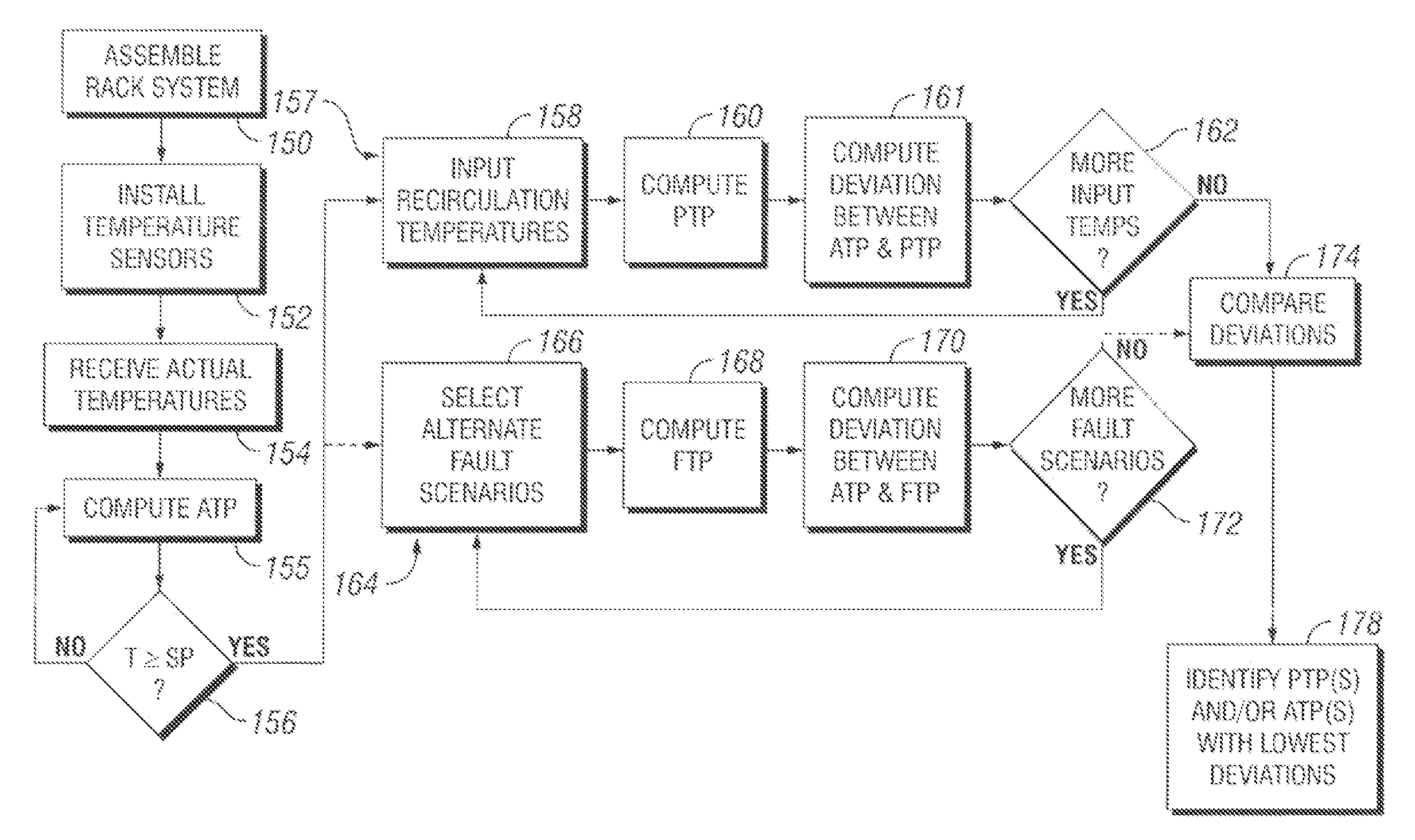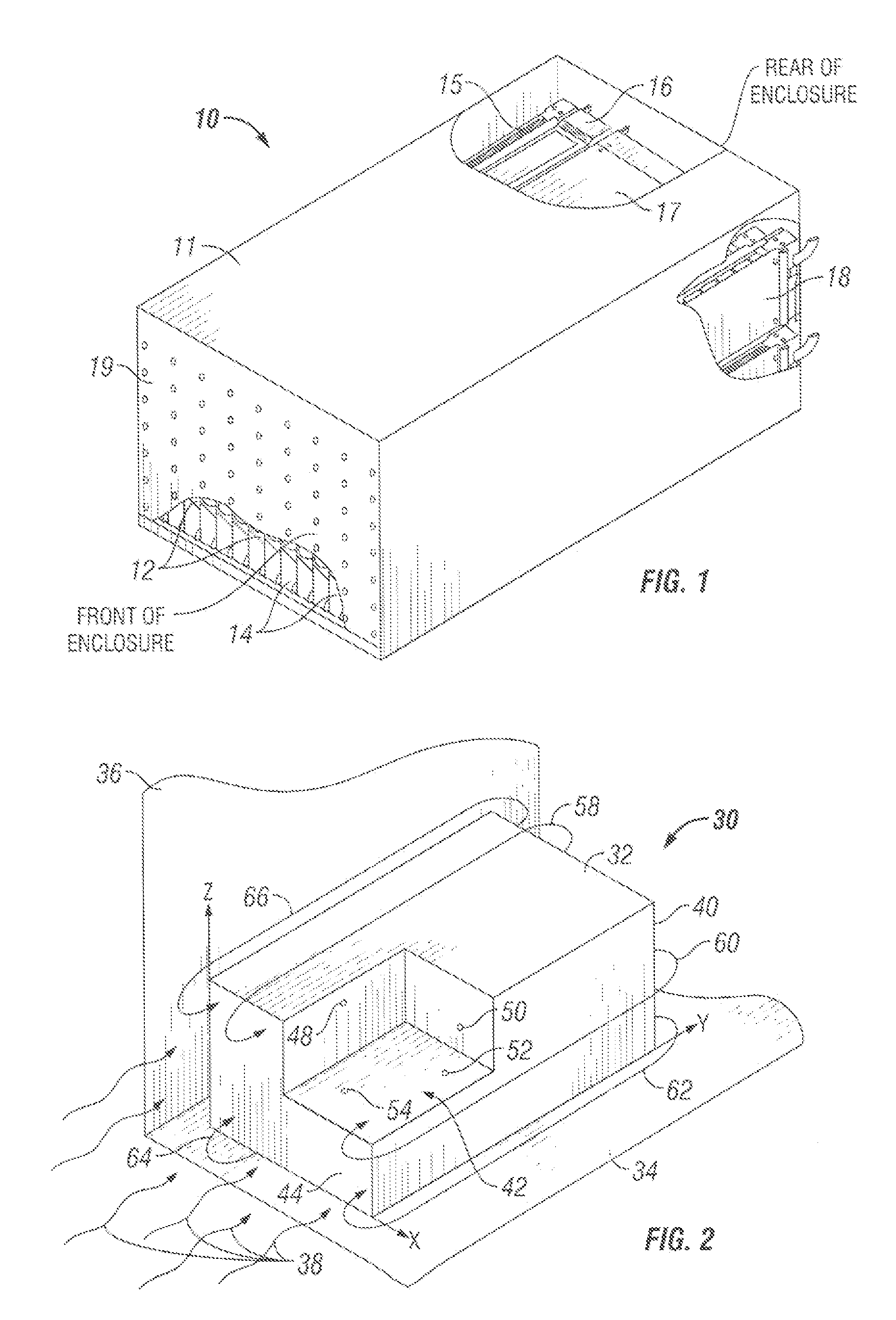Method of detecting recirculation of heated air within a rack enclosure
a rack enclosure and recirculation technology, applied in the field of detecting recirculation of heated air within the rack enclosure, can solve the problems of rack mounted equipment experiencing a substantial temperature increase, affecting the maintenance process, and affecting the effect of failures and maintenance procedures,
- Summary
- Abstract
- Description
- Claims
- Application Information
AI Technical Summary
Problems solved by technology
Method used
Image
Examples
Embodiment Construction
[0020]The present invention provides systems and methods for characterizing heating patterns within electronic systems, and, in particular, for detecting and analyzing the effects of recirculation of heated air. The invention may be used with a wide variety of electronic systems having heat generating components. Embodiments of the invention are particularly useful in conjunction with rack mounted server systems (“rack systems”), which may house a large number of components. Many of the components generate heat or otherwise affect heat transfer throughout the rack system. Thus, rack systems are discussed extensively below in that context. Discussions of rack systems, however, are not intended to limit the scope of the invention to applications involving rack systems.
[0021]A wide range of rack systems may benefit from the invention. For example, one rack system useful with the invention might include a single server mounted in a rack. Such a rack system would likely have many interna...
PUM
| Property | Measurement | Unit |
|---|---|---|
| temperature | aaaaa | aaaaa |
| heat transfer model | aaaaa | aaaaa |
| temperature | aaaaa | aaaaa |
Abstract
Description
Claims
Application Information
 Login to View More
Login to View More - R&D
- Intellectual Property
- Life Sciences
- Materials
- Tech Scout
- Unparalleled Data Quality
- Higher Quality Content
- 60% Fewer Hallucinations
Browse by: Latest US Patents, China's latest patents, Technical Efficacy Thesaurus, Application Domain, Technology Topic, Popular Technical Reports.
© 2025 PatSnap. All rights reserved.Legal|Privacy policy|Modern Slavery Act Transparency Statement|Sitemap|About US| Contact US: help@patsnap.com



